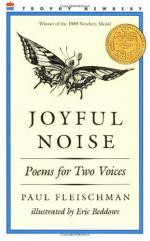
|
| Name: _________________________ | Period: ___________________ |
This test consists of 5 short answer questions, 10 short essay questions, and 1 (of 3) essay topics.
Short Answer Questions
1. This poem pays respect to these insects when?
2. "Whirligig Beetles" describes ____________ of these beetles.
3. What is the mood of "Water Boatmen?"
4. What tool is used by the poet to express the beetles' qualities?
5. What happens when the water boatmen reach their destination?
Short Essay Questions
1. How does this poem draw attention to nature and the life cycle of insects?
2. What is the purpose of "Cicadas?"
3. How are cicadas like a choir?
4. From whose perspective is "Honeybees?" Why?
5. Why are these insects compared to rowers?
6. Describe the whirligig beetle, based on this poem.
7. What is "Requiem?"
8. What is the mood of "Cicadas?" Why?
9. Compare the different types of honeybees.
10. How does the author use poetry and literary devices to teach about whirligig beetles?
Essay Topics
Write an essay for ONE of the following topics:
Essay Topic 1
Some of the insects' actions are described.
Part 1) What poems focus on action? Whose action is the focus? Why is this the focus? What does this reveal about this insect?
Part 2) How do the other poems contrast these very active poems? Why does this contrast exist? What does this reveal about the insects?
Part 3) How is action connected to the mood of the poem? How important is the mood of the poem? Explain. Is the mood of a story important to every story? Why or why not?
Essay Topic 2
There are many insect species described in this book.
Part 1) After reading these poems, to which species do you feel most connected? Why? How has this book changed your attitude toward this species? Why?
Part 2) Which species would you add, if you were the poet? Why? How might this species compare to those already included in this book?
Part 3) How do these species represent all insects? Are all types of insects adequately represented? If so, how? If not, why not?
Essay Topic 3
There are two types of bees found in "Honeybees."
Part 1) What are these two types of bees? How are they similar? How are they different? Why are they both included in this poem? What does this say about bee culture and society?
Part 2) How can one make a connection between these bees and human culture and society? What might this reveal about the author's view of these types of people in society?
Part 3) Can you relate to these two types of bees? To which type of bee do you feel more connected? Why?
|
This section contains 802 words (approx. 3 pages at 300 words per page) |

|




